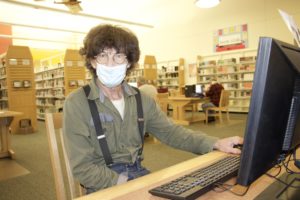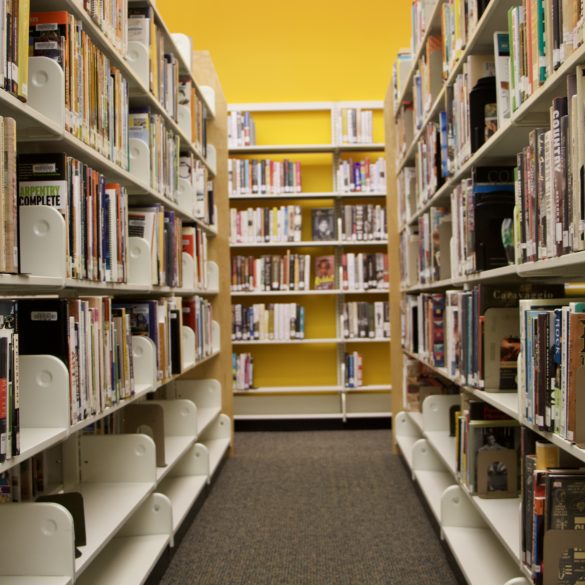Libraries, churches, and other social spaces serve as environments for people to connect outside of their homes and workplaces.
If time was money, each day we would wake up with $24 in our wallets. Most people split the large majority of this hypothetical cash between two places – work and home. But an increasing number of people are finding alternative spaces, otherwise known as third places, that are worthy of spending their 24 precious daily dollars on.
The third place is a term coined in the 1900s by sociologist Ray Oldenberg. Third places refer to spaces where people spend time between home (the first place) and work (the second place). They are often locations where we exchange ideas and build relationships. Centered around social interaction, people may seek out third places for a sense of community and belonging.
“Usually humans seek out groups of people in order to engage in social learning. We’re very social creatures,” says Caitlyn Placek, an associate professor of anthropology at Ball State University.
Classic examples of third places include libraries and churches. These two spots are public spaces that allow for interaction and relationship-building.
LIBRARIES
Cosmetologist, United States Army veteran, world traveler, That 70s Show fanatic, and self-proclaimed history buff Michael McKinley is a busy guy. At 73 years old, he has enough hobbies to last him a lifetime and enough stories to entertain a crowd for hours. With a life as adventurous as McKinley’s, it’s no wonder he sought out the most quiet and comfortable third place — the Maring-Hunt Public Library.
Born and raised in Muncie, McKinley graduated from Southside High School before enlisting in the Army. He was stationed in Germany for three years in the heat of the Vietnam War and was there to witness the Soviet invasion in 1941.
Upon returning to Muncie after serving overseas, McKinley started working as a barber. He eventually realized that his true passion was for more than traditional barbershop-style haircuts and quit his job to go to cosmetology school. McKinley graduated from Amber’s Beauty School in 1985 and opened his very own salon in Muncie called “Hair People”, where he still works with a limited clientele today.
It was around the same time he graduated from beauty school in the 1980s that McKinley started regularly visiting the Muncie Public Library. Back then, he would go to the Carnegie Library since it was the main public library in the city at the time. Today, he bikes the nineteen blocks from his house to the Maring-Hunt Library on an almost daily basis. He proudly boasts that he has his library card number memorized by heart.
“I would say the best thing Muncie has going for it is the Muncie Public Library,” McKinley says without hesitation.

For the most part, McKinley goes to the library for the wide array of resources available to him there, such as CDs, movies, books, audio tapes, and access to computers and a stable internet connection. He also enjoys interacting with the people, in particular the staff.
“I don’t know anyone here outside of the library,” McKinley says. “But I don’t know of a bad person who works here. They’re all really nice people.”
Mary Lou Gentis is one of the many people on staff at Maring-Hunt. She started as a part-time paraprofessional at the Carnegie Library in 1994. Gentis eventually moved up the ladder and now works as the manager of the Maring-Hunt Public Library.
Gentis says McKinley has been coming to the library for as long as she can remember. She recalls him frequently using the Interlibrary Loan service back when she worked the reference desk at Carnegie.
“Public libraries have always offered services and resources for lifelong education and entertainment. However, they have also provided a place of safety and security for everyone in a community,” says Gentis. “A public library is a friendly and neutral place that welcomes everyone from all walks of life.”
One thing McKinley loves about the library is the diverse books and movies available to him there that have allowed him to chase after a variety of passions.
“Your interests change as you go through life,” he says.
While planning his upcoming trip to visit six cities across Ukraine, the library had tapes for him to learn the language before his travels. When he was studying at Amber’s Beauty School, the library had cosmetology books to help him in his studies. During periods where he was particularly fixated on various historical events, the library had movies and documentaries for him to learn more.
For people like McKinley, libraries are more than just a place to check out a book every once in a while. They serve as a haven — a perfect third place.
CHURCHES
Michael Greener is a junior architecture student at Ball State University. Despite late nights and early mornings at the College of Architecture and Planning (CAP) building working on projects for his classes, Greener finds a way to spend time at least five days a week at his favorite place — St. Francis of Assisi Parish & Newman Center.
Greener proudly serves as the vice president of Ball State University’s Catholic student community group, Cardinal Catholic. In this role, Greener is responsible for planning and hosting events for students and being an active member of the community, both on campus and at St. Francis.

Raised Catholic, Greener was a Knight of the Holy Temple and served masses at his home parish throughout high school. When he moved to Muncie as a freshman, he sought out a faith community and quickly found St. Francis and Cardinal Catholic.
Third places are all about creating a connection and finding a space where you are able to build and foster relationships. According to Greener, churches are a perfect example of this social space.
“The heart of this place, I think, is in relationship,” says Greener.
Greener doesn’t mind sharing his third place with others. In fact, he enjoys it. He recalls a time when he was on campus with one of the missionaries at St. Francis. They were inviting students who walked past to join them at adoration hour. Greener wasn’t surprised that most students walked by without acknowledging them, but he remembered one student in particular who was in a rush. The student said he needed to go grab dinner on campus, but that he would join them at adoration after he ate.
The guy seemed busy and had only vague instructions to find the church, so Greener wasn’t expecting him to show up, but, during adoration later that night, Greener looked up from praying to see the student kneeling across the church from him. Eventually, the two became friends and maintained a relationship. Likewise, Greener says he stayed involved in the Catholic church even after leaving Muncie.
“He was looking for a place. And he found home here. He found friendships,” Greener says.
According to Pew Research Center, the number of Americans who identify as Catholic decreased from 23 percent in 2009 to 20 percent in 2019. Greener recognizes this change in his church and admits there is some work to do, but he encourages people to let go of biases and preconceived notions about the Catholic Church.

“Disregard the reputation and know that the people here want to love you and want to serve you,” Greener says.
According to Greener, third places are about real connections, not superficial or surface-level ones. He smiles as he reminisces on dinners at Texas Roadhouse, late nights playing card games, and Wednesday night meals and events like “country night” and “boo bash” at St. Francis.
“We’re all on the same page that this place is home and that this place is about relationships,” Greener says. “Even though we’re all different, we can talk to everybody. We can talk to anybody and be honest with them and love them and serve them. So that’s been really beautiful.”
FINDING & FOSTERING THIRD PLACES
Places like libraries and churches that have traditionally served as third places have taken a hit in recent years. This slow and silent death of the third place in the wake of digitization is hard to ignore.
The Institute of Museum and Library Services (IMLS) data published in July of 2019 shows a steady decline in physical library visits of about 3 percent each year for the past seven years. This data is pre-pandemic, before 94 percent of the country’s libraries shut down, at least temporarily.
Likewise, the number of U.S. citizens affiliated with a church decreased from 73 percent of the population in 1940 to 60 percent of the population in 2018.
Even places like coffee shops and cafés that once served as hubs of social interaction and community have experienced the effects of this decline as the number of people who get coffee via drive-thru versus in-store has increased by 6 percent in the last five years alone.
Many people now turn to technology and social media for “connecting,” but founder of the third place Ray Oldenburg notes the most effective means for building real community seem to be physical places where people can easily and routinely connect with each other.
Although not everyone resonates with the concept of the third place, many people rely on them on a daily basis. A study conducted by Cleveland State University in 2009 found that third places have been found to enhance overall quality of life and foster a sense of community.
“There could be lots of benefits [to having a third place],” Placek says. “For some people, it helps them think more creatively. It just depends on the type of place.”
Placek, the anthropology professor, says her third place is the yoga studio where she goes multiple times a week to relax, stay in shape, and connect with people that share similar interests. For McKinley, it’s a computer station at the Maring-Hunt Library. For Greener, it’s the pews of St. Francis. For me, it’s Noble Coffee & Tea, the local coffee shop in my hometown of Noblesville, Indiana, where the baristas knew me by name and where I would regularly sit for hours after school, nursing an iced chai while doing homework. We have found our third place — our safe haven. Our home away from home. Our space to belong and connect. Where’s yours?
Sources: Project for Public Spaces (PPS), Pew Research Center, Institute of Museum and Library Services (IMLS), Library Journal, Gallup News, Statista, ResearchGate
Images: Becca Foerder and Janie Arseneaux
Featured Image: Becca Foerder




